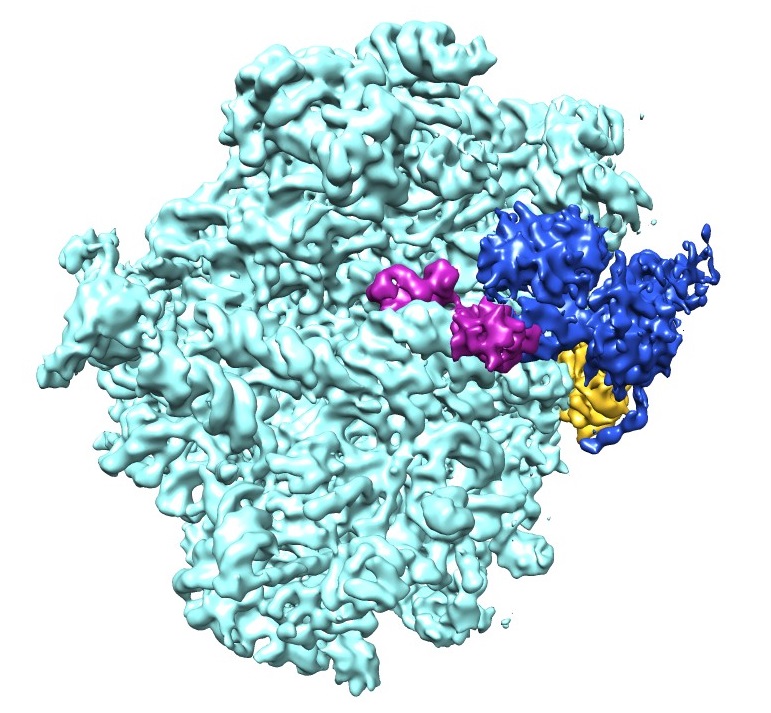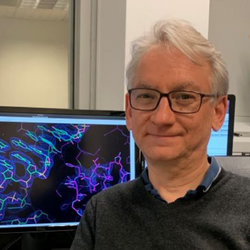Professor Alan Warren
Mechanisms of ribosome assembly and stem cell subversion
Email: ajw1000@cam.ac.uk
Departmental Affiliation: Department of Haematology
Biography
Alan Warren obtained his undergraduate degrees in Biochemistry (1983) and Medicine (1986) at the University of Glasgow. He completed his PhD in Molecular Biology in 1995 in the laboratory of Dr. Terry Rabbitts at the MRC Laboratory of Molecular Biology where he discovered that the LIM-only protein Lmo2 is required for haematopoiesis. He is currently Professor of Haematology at the University of Cambridge, UK.

Visualising SBDS (magenta), EFL1 (blue) and eIF6 (yellow) on the large ribosomal subunit using single-particle cryo-electron microscopy. Image credit: Alan Warren
Research
The myelodysplastic syndromes (MDS) are a poorly understood group of acquired clonal stem cell disorders characterized by ineffective haematopoiesis and a propensity to progress to acute myeloid leukaemia (AML). An exciting body of recent data has linked the pathogenesis of both acquired and inherited forms of MDS to defective ribosome maturation. In particular, Shwachman-Diamond syndrome (SDS), an autosomal recessive disorder caused by mutations in the highly conserved SBDS gene, is associated with a substantial lifetime risk of developing MDS and/or AML of 30-40%.
Our laboratory solved the X-ray structure of the SBDS protein and subsequently discovered that it is required for a late cytoplasmic step in the maturation of 60S ribosomal subunits. Thus, SDS represents an important model for understanding how defects in ribosome maturation can perturb haematopoietic stem cell function and promote the multi-step progression to MDS and AML. Recent in vivo data have established the ribosomal protein-Mdm2 interaction as a general stress-signalling pathway activated by aberrant ribosome biogenesis that is essential for safeguarding against oncogenic c-MYC induced tumorigenesis. In future work, we aim to elucidate the detailed mechanism of action of the SBDS protein and test the hypothesis that the stem cell defect in SDS may arise as a consequence of p53 stabilization in response to ribosomal stress.
Our long-term goal is to elucidate the molecular mechanisms of ribosome assembly and to understand how defects in this process subvert haematopoietic stem cell function to cause bone marrow failure and leukaemia predisposition.


